Trebah Gardens with C+M

Beez Neez now Chy Whella
Big Bear and Pepe Millard
Mon 23 Jul 2018 23:47
|
Trebah Gardens with Cecily and
Martin 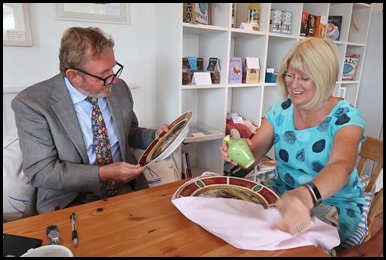  The morning began with a difference. Just
down the road Cec presented a few of mum’s bits to a local
auctioneer for perusal. Whilst that was going on I took in the jigsaw
puzzle box lid picture of the pub opposite. Coffee
enjoyed, we headed to Trebah Gardens where I was given permission to do a blog
on the garden history.
 The scene from the car
park – so very English.
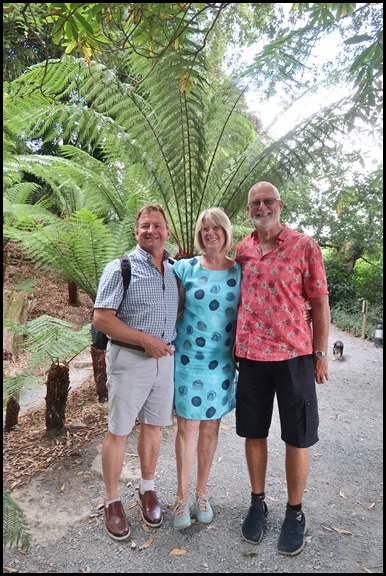  Family pose by a
water feature.
 The taller of the two
trachycarpus in the valley is the tallest of its kind in the UK, standing
at 14.7 metres.
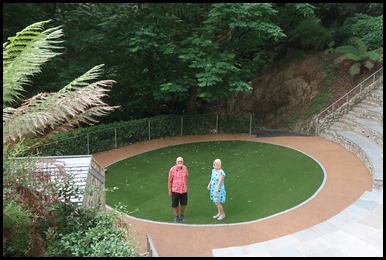  Brother and sister take to
the stage.
 A great favourite of mine, the monkey puzzle tree (Araucaria
araucana).
  Blossom on the
way to the massive gunnera.
  Posing ‘neath the
leaves.
   The lake, like a
Monet.
 Agapanthus.
  Purple and pink
hydrangea.
  Time for an ice cream and lovebirds bimble on the
beach.
  Polgwidden Cove in the
1960s.
 Workmen removing
concrete in the early 1960s.
 Polgwidden Cove (centre) on the 1888 Ordnance Survey Map.
A brief history of the
Helford River and Polgwidden Cove: The Helford River is a relic of an an older
and wilder Cornwall and is one of the very few places in England where ancient
woodland meets the sea. It is listed as an area of outstanding natural
beauty.
The name Helford derives from the
Cornish word Heyl, meaning estuary. Polgwidden Cove is made up
of Pol, meaning pool, pond or lake and Gwidden,
meaning white, possibly because of the light sand and
rocks.
The area was first settled by the
Celts in the 3rd and 2nd centuries BC who were streaming for tin, fishing,
farming and collecting oysters. Romans and Phoenicians used to navigate up the
river to Gweek and the oak woodlands bordering the river were recorded in the
Doomsday Book.
During the 19th century the river was
a centre for industry with Gweek distributing tin to places all over the globe.
Employment was scarce, with smuggling and piracy rife in the river’s many hidden
creeks, including Frenchman’s Creek made famous by Daphne du
Maurier,
 The original
boathouse, photographed from the beach circa 1914.
When the garden was developed around
1850 a boathouse was constructed on the west side of the beach; this was
dynamited during D-Day preparations to allow access for the
tanks.
 The original boathouse, looking up the garden circa 1914.
During WWII Polgwidden Cove was
selected as a D-Day embarkation point as its location meant crossing the
Falmouth Bay was not a necessity. A sturdy metal road was constructed from Bar
Road, near Helford Passage, down to the cove. The beach was overlaid with
concrete, and jetties were constructed to allow ten 150 foot flat-bottomed
landing craft to moor.
On the 1st of June 1944, 7500 American
troops from the 29th US Infantry Division embarked for Operation Overlord, the
biggest amphibious landing in history. These events left Polgwidden Cove with
the local nickname ‘Yankee Beach’.
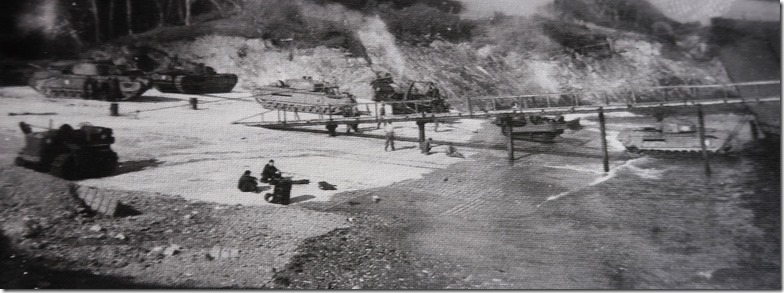 Army activity on
the beach in 1944.
 US military
ships preparing to leave for Normandy.
 During the 1960s Trebah became the
home of racing driver and designer of Healey cars, Donald Healey. He obtained a
grant from the government to remove the wartime infrastructure and concrete. He
used the granite found below the concrete (most probably from the old boathouse)
to build the existing boathouse. The information board hangs in the boathouse and is a
wonderful read whilst waiting in the ice cream queue.
 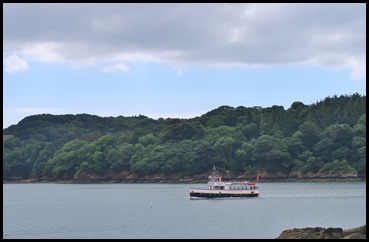 A yacht and the
ferry in the Helford Passage.
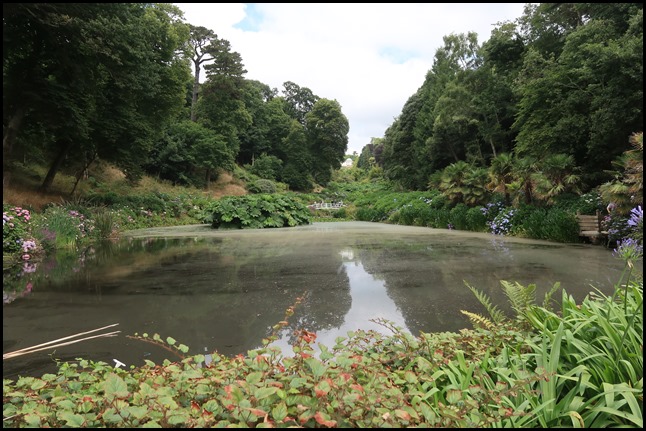 Time to head back by the lake.
  A gunnera water
feature and a bee enjoying what bees
do.
 A pretty display
in the shop.
ALL IN ALL A BEAUTIFUL GARDEN WITH
A RICH HISTORY
A GREAT DAY
OUT |